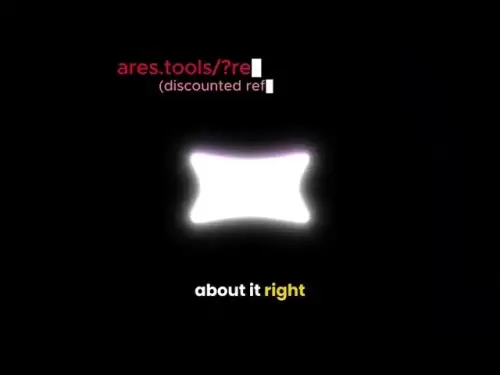-
 Bitcoin
Bitcoin $117500
1.68% -
 Ethereum
Ethereum $3752
3.35% -
 XRP
XRP $3.169
2.79% -
 Tether USDt
Tether USDt $1.000
0.02% -
 BNB
BNB $781.8
2.63% -
 Solana
Solana $186.9
4.52% -
 USDC
USDC $1.000
0.01% -
 Dogecoin
Dogecoin $0.2386
4.95% -
 TRON
TRON $0.3180
1.34% -
 Cardano
Cardano $0.8253
3.05% -
 Hyperliquid
Hyperliquid $44.88
6.59% -
 Stellar
Stellar $0.4452
7.25% -
 Sui
Sui $4.009
9.87% -
 Chainlink
Chainlink $18.37
4.97% -
 Hedera
Hedera $0.2699
13.91% -
 Bitcoin Cash
Bitcoin Cash $554.2
5.80% -
 Avalanche
Avalanche $24.18
4.47% -
 Litecoin
Litecoin $113.6
3.04% -
 Shiba Inu
Shiba Inu $0.00001409
6.01% -
 UNUS SED LEO
UNUS SED LEO $8.985
0.36% -
 Toncoin
Toncoin $3.316
7.35% -
 Ethena USDe
Ethena USDe $1.001
-0.01% -
 Uniswap
Uniswap $10.51
5.40% -
 Polkadot
Polkadot $4.107
4.42% -
 Monero
Monero $323.5
-2.62% -
 Dai
Dai $1.000
0.01% -
 Bitget Token
Bitget Token $4.566
3.18% -
 Pepe
Pepe $0.00001259
4.88% -
 Aave
Aave $299.6
4.42% -
 Cronos
Cronos $0.1345
6.71%
How to choose a mining pool? What are the differences in the income settlement methods of different mining pools?
When choosing a mining pool, consider fee structure, payout methods, reliability, and community support to maximize earnings and minimize risks.
Jun 01, 2025 at 07:57 am
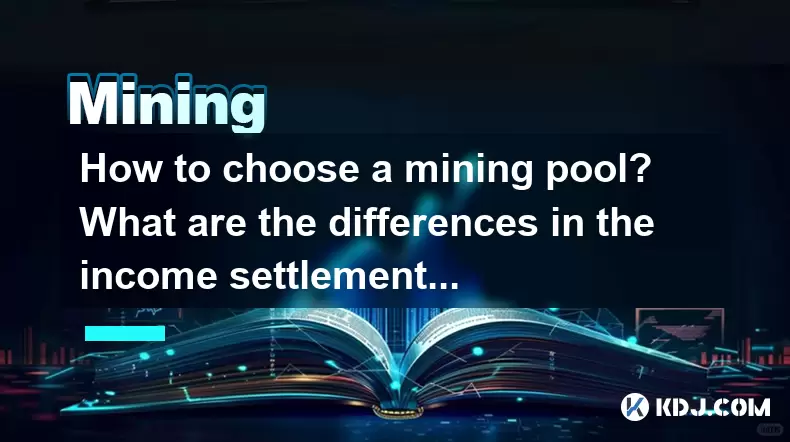
Choosing the right mining pool is crucial for cryptocurrency miners looking to maximize their earnings and minimize their risks. A mining pool is a group of miners who combine their computational resources over a network to increase their chances of solving complex mathematical problems and earning cryptocurrency rewards. When selecting a mining pool, several factors need to be considered, including the pool's fee structure, payout methods, reliability, and community reputation.
Factors to Consider When Choosing a Mining Pool
When embarking on the journey to find the perfect mining pool, it is essential to consider the following factors:
Fee Structure: Different mining pools charge different fees for their services. These fees can significantly impact your overall earnings. Some pools charge a flat fee, while others take a percentage of your earnings. It's important to understand the fee structure of each pool to determine which one offers the best value for your mining efforts.
Payout Methods: Mining pools employ various payout methods, such as Pay Per Share (PPS), Proportional, and Score-based systems. Each method has its own advantages and disadvantages, affecting how frequently and how much you get paid.
Reliability and Uptime: A reliable mining pool should have minimal downtime and a stable connection. Checking the pool's historical uptime and reading user reviews can provide insights into its reliability.
Pool Size: The size of the mining pool can affect your chances of earning rewards. Larger pools tend to find blocks more frequently, leading to more consistent payouts. However, they also come with smaller individual rewards due to the larger number of participants.
Community and Support: A mining pool with an active community and responsive support team can be invaluable. Look for pools with active forums, social media presence, and customer support options.
Understanding Different Income Settlement Methods
The way a mining pool settles your income can significantly impact your overall profitability. Here are some of the most common income settlement methods used by mining pools:
Pay Per Share (PPS): In a PPS system, miners receive a fixed amount of cryptocurrency for each share they contribute to the pool. This method provides a steady income stream, as miners are paid regardless of whether the pool finds a block. PPS is favored by miners looking for predictable earnings.
Proportional: Under the Proportional method, miners are paid based on the number of shares they contributed to the pool, relative to the total number of shares submitted by all miners. Payments are made once a block is found. This method can lead to more variable income, as payouts depend on the pool's success in finding blocks.
Score-based: Score-based systems adjust the value of each share based on the time it was submitted. Shares submitted closer to the time a block is found are valued higher. This method aims to encourage miners to stay online and contribute consistently. Score-based systems can be more complex but may offer higher rewards for dedicated miners.
Pay Per Last N Shares (PPLNS): PPLNS rewards miners based on the last N shares they submitted before a block is found. This method can lead to higher payouts for miners who stay online longer, as their recent contributions are more heavily weighted. PPLNS can be more rewarding for consistent miners but may result in lower earnings for those who mine sporadically.
Evaluating the Impact of Pool Fees on Your Earnings
When choosing a mining pool, it's crucial to understand how the pool's fees will affect your net earnings. For instance, a pool with a lower fee might seem attractive at first glance, but if it has a less favorable payout method or lower reliability, it could end up costing you more in the long run.
- Example Calculation: Suppose Pool A charges a 1% fee and uses a PPS payout method, while Pool B charges a 2% fee but uses a Proportional method. If Pool A's PPS rate is 0.0001 BTC per share and you mine 10,000 shares a day, your daily earnings before fees would be 1 BTC. After the 1% fee, you would receive 0.99 BTC. On the other hand, if Pool B finds a block every 10 days and you contribute 1% of the total shares, your earnings from one block would be 0.1 BTC. After the 2% fee, you would receive 0.098 BTC per block, or roughly 0.0098 BTC per day. In this scenario, Pool A would be more profitable.
How to Join a Mining Pool
Joining a mining pool involves several steps, and it's important to follow them carefully to ensure a smooth transition. Here is a detailed guide on how to join a mining pool:
Choose a Mining Pool: Based on the factors discussed earlier, select a mining pool that aligns with your needs and preferences.
Register an Account: Visit the mining pool's website and create an account. You will typically need to provide an email address and set a password.
Configure Your Mining Software: Download and install mining software compatible with your chosen pool. Popular options include CGMiner, EasyMiner, and BFGMiner. Configure the software with the pool's server address, port, and your account credentials.
Start Mining: Once your software is configured, start the mining process. Your mining rig will begin contributing shares to the pool, and you will start earning rewards based on the pool's payout method.
Monitor Your Earnings: Regularly check your earnings on the pool's dashboard. Most pools provide real-time updates on your mining progress and payouts.
Comparing the Pros and Cons of Different Payout Methods
Each payout method has its own set of advantages and disadvantages, and understanding these can help you make an informed decision:
PPS Pros: Predictable income, no risk of not being paid if the pool doesn't find a block.
PPS Cons: Generally higher fees, potentially lower overall earnings compared to other methods.Proportional Pros: Lower fees, potential for higher earnings if the pool finds blocks frequently.
Proportional Cons: Variable income, risk of not being paid if the pool doesn't find a block.Score-based Pros: Encourages consistent mining, potential for higher rewards for dedicated miners.
Score-based Cons: More complex payout calculation, potentially lower earnings for sporadic miners.PPLNS Pros: Higher rewards for consistent miners, encourages long-term participation.
PPLNS Cons: Lower earnings for sporadic miners, potential for delayed payouts.
Frequently Asked Questions
Q: How does the size of a mining pool affect my earnings?
A: The size of a mining pool can impact your earnings in several ways. Larger pools tend to find blocks more frequently, leading to more consistent payouts. However, because the rewards are distributed among more miners, your individual share of the reward may be smaller. Conversely, smaller pools may find blocks less often, leading to more variable income, but your share of the reward may be larger when a block is found.
Q: Can I switch between mining pools easily?
A: Yes, switching between mining pools is generally straightforward. You will need to stop your mining software, update the server address and port to the new pool's details, and start mining again. However, consider the potential impact on your earnings, as some pools may have different payout methods and fees.
Q: Are there any risks associated with joining a mining pool?
A: While mining pools can increase your chances of earning rewards, there are some risks to consider. These include the pool's reliability, potential for downtime, and the risk of the pool operator engaging in fraudulent activities. Always research the pool's reputation and read user reviews before joining.
Q: How do I know if a mining pool is reliable?
A: To assess a mining pool's reliability, look at its historical uptime, read user reviews, and check for any reported issues or downtime. A reliable pool should have a stable connection and minimal downtime. Additionally, a pool with an active community and responsive support team is often a good indicator of reliability.
Disclaimer:info@kdj.com
The information provided is not trading advice. kdj.com does not assume any responsibility for any investments made based on the information provided in this article. Cryptocurrencies are highly volatile and it is highly recommended that you invest with caution after thorough research!
If you believe that the content used on this website infringes your copyright, please contact us immediately (info@kdj.com) and we will delete it promptly.
- UAE's Digital Asset Revolution: Stablecoin Regulations Take Center Stage
- 2025-07-26 10:40:11
- VIRTUAL Weekly Drop: Recovery Analysis and Privacy Push
- 2025-07-26 08:50:11
- Bitcoin, Cynthia Lummis, and Freedom Money: A New Yorker's Take
- 2025-07-26 08:30:11
- Pudgy Penguins, Crypto Prices, and the Altseason Buzz: What's the Hype?
- 2025-07-26 10:51:48
- Crypto Gainers, Top 10, Week 30: Altcoins Buck the Trend
- 2025-07-26 08:55:12
- Solana, Altcoins, and Coinbase: What's the Buzz?
- 2025-07-26 06:30:12
Related knowledge

What was the highest APY for IRON mining?
Jul 23,2025 at 05:14am
Understanding IRON Token and Its Mining MechanismThe IRON token is a stablecoin that operates within the Iron Finance ecosystem, primarily on blockcha...

What is impermanent loss in IRON pools?
Jul 23,2025 at 09:00am
Understanding Impermanent Loss in the Context of IRON PoolsImpermanent loss is a phenomenon that affects liquidity providers in decentralized finance ...

How to claim rewards from IRON mining?
Jul 23,2025 at 02:21pm
Understanding IRON Mining and Reward MechanismsIRON Finance operated as a decentralized finance (DeFi) protocol on the Polygon and Binance Smart Chain...
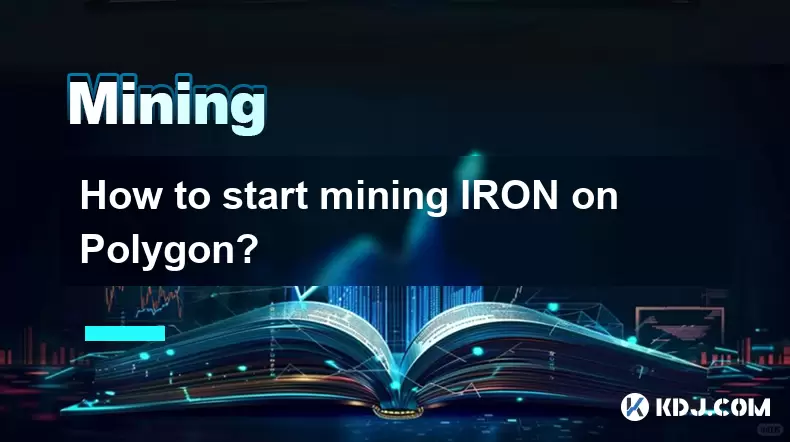
How to start mining IRON on Polygon?
Jul 23,2025 at 08:00pm
Understanding IRON and Its Role on PolygonIRON is a decentralized, algorithmic stablecoin designed to maintain a 1:1 peg with the US dollar. It operat...
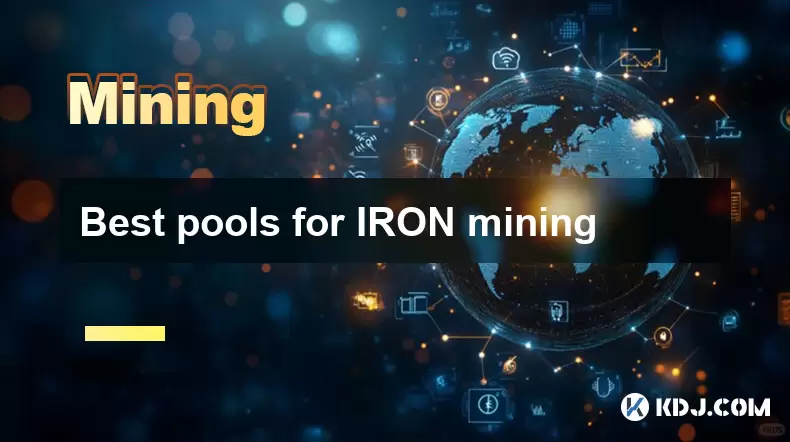
Best pools for IRON mining
Jul 26,2025 at 03:56am
Understanding IRON Mining and Its Unique MechanismIRON (Iron Finance) was a decentralized finance (DeFi) project that aimed to create a multi-chain al...
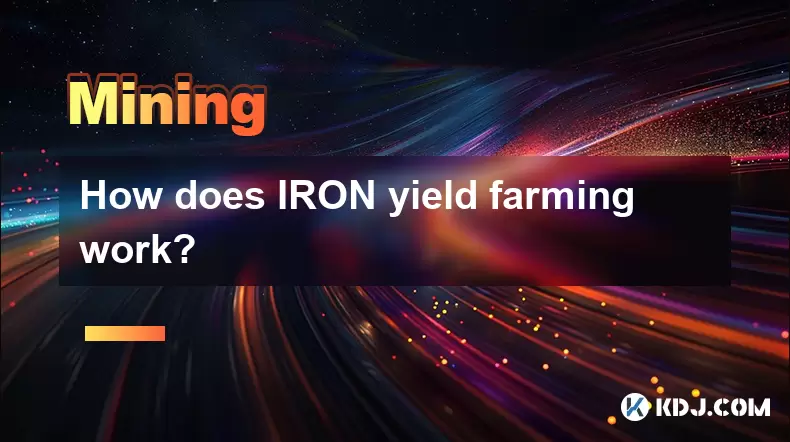
How does IRON yield farming work?
Jul 23,2025 at 10:14pm
Understanding IRON Yield Farming and Its Core MechanismIRON yield farming is a decentralized finance (DeFi) strategy that allows users to earn rewards...

What was the highest APY for IRON mining?
Jul 23,2025 at 05:14am
Understanding IRON Token and Its Mining MechanismThe IRON token is a stablecoin that operates within the Iron Finance ecosystem, primarily on blockcha...

What is impermanent loss in IRON pools?
Jul 23,2025 at 09:00am
Understanding Impermanent Loss in the Context of IRON PoolsImpermanent loss is a phenomenon that affects liquidity providers in decentralized finance ...

How to claim rewards from IRON mining?
Jul 23,2025 at 02:21pm
Understanding IRON Mining and Reward MechanismsIRON Finance operated as a decentralized finance (DeFi) protocol on the Polygon and Binance Smart Chain...

How to start mining IRON on Polygon?
Jul 23,2025 at 08:00pm
Understanding IRON and Its Role on PolygonIRON is a decentralized, algorithmic stablecoin designed to maintain a 1:1 peg with the US dollar. It operat...

Best pools for IRON mining
Jul 26,2025 at 03:56am
Understanding IRON Mining and Its Unique MechanismIRON (Iron Finance) was a decentralized finance (DeFi) project that aimed to create a multi-chain al...

How does IRON yield farming work?
Jul 23,2025 at 10:14pm
Understanding IRON Yield Farming and Its Core MechanismIRON yield farming is a decentralized finance (DeFi) strategy that allows users to earn rewards...
See all articles





















